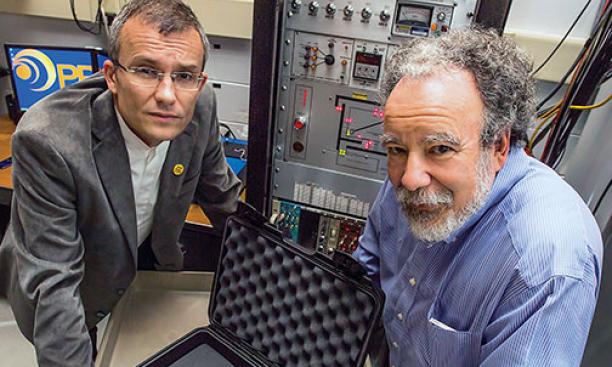

Inspecting nuclear weapons that are slated to be dismantled poses a tricky challenge: How does a country present proof to inspectors that the weapons are real warheads without divulging classified design details of those weapons? Princeton researchers are developing a protocol for a system that would verify the presence of warheads while keeping crucial information secret.
The protocol — developed by professor of mechanical and aerospace engineering and international affairs Alexander Glaser, astrophysics professor Robert Goldston, and former Princeton computer science professor Boaz Barak — could provide a key step toward further reduction of nuclear arms.
Past nuclear-arms negotiations have focused on the reduction of strategic- or long-range delivery systems, such as bombers, submarines, and ballistic missiles, since inspectors easily can count the number of warheads present in those systems. But negotiations have not yet addressed the issue of verifying warheads, according to Glaser, in part because verification might expose classified information.
The project had its genesis at a faculty lunch where Glaser, who had been considering how inspections might keep warhead designs concealed, met Princeton computer scientist David Dobkin. Dobkin introduced Glaser to the concept of zero-knowledge proofs. Used in cryptography, such proofs answer questions about an object with a high level of confidence without revealing any other information about the object.
For the “zero-knowledge protocol” the scientists developed, high-energy neutrons would be beamed through a host warhead and a reference warhead in side-by-side tests, and the neutron outputs for each would be recorded. The host would pre-load neutron counts into all the detectors beforehand, essentially a “negative” of the neutron spectrum expected from a warhead beamed with high-energy neutrons. Immediately before the test, the inspector would randomly choose which detector to pair with the reference warhead and which to pair with the host warhead — to prevent the host from cheating by preloading different counts.
If the test warhead was real, both the reference warhead and the test would produce roughly the same total neutron count. The inspector would see only total-count results for the two warheads. Repeated tests, with inspectors choosing the detectors, would bolster confidence in the results. The scientists’ findings were reported in Nature in June.
A project to test this approach is under construction at the Princeton Plasma Physics Lab. “There are certain real-world effects that we have to make sure we understand and can control so that they ultimately don’t affect the test,” Glaser says. His team will build detectors and conduct trials over the next five years with funding from the Department of Energy and others. Says Glaser, “We hope to trigger a paradigm shift in thinking about how to verify nuclear disarmament, and show that it is much more feasible than often assumed.”
